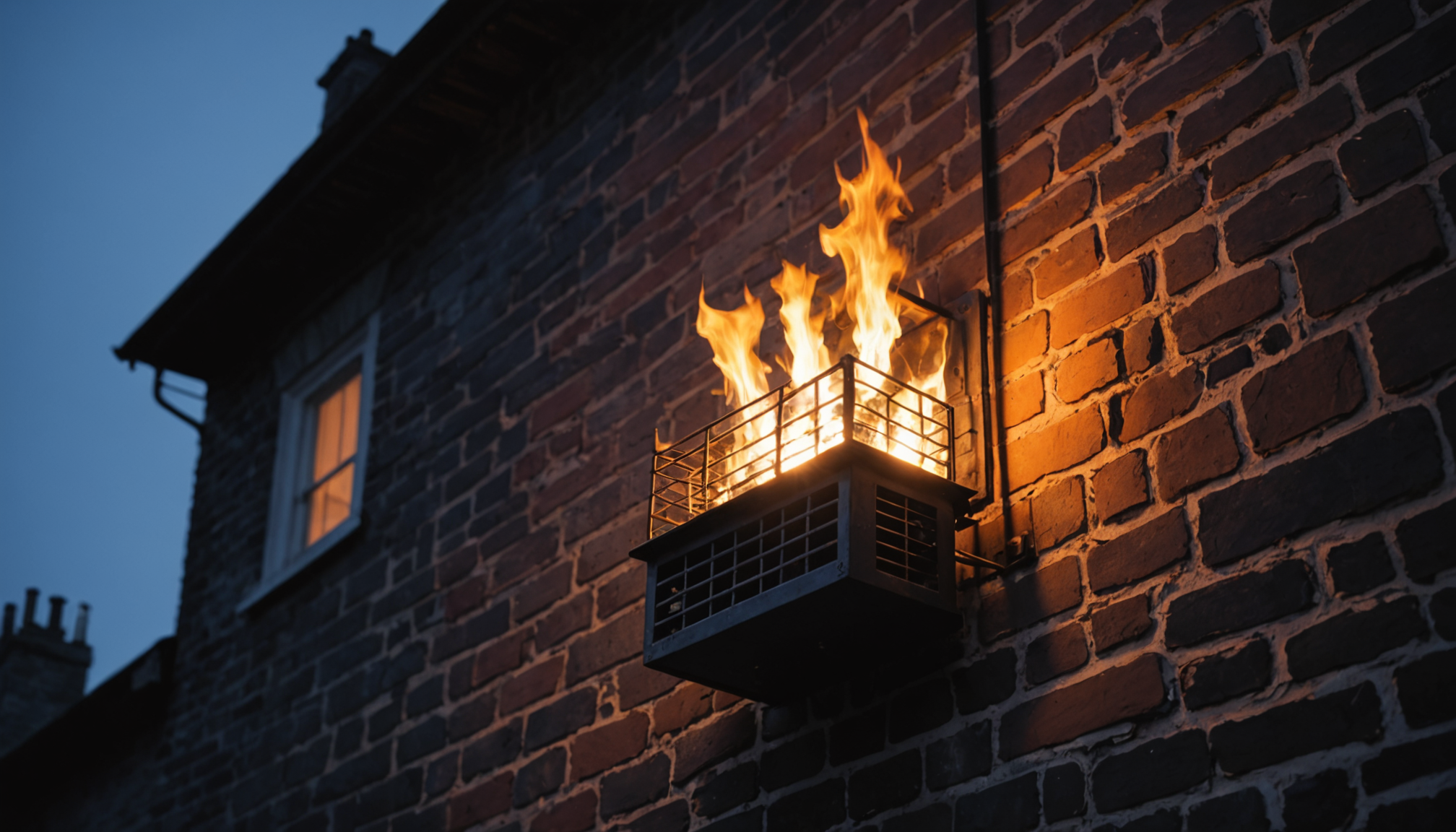When it comes to cleaning your chimney safely, selecting the appropriate tools and materials is a crucial first step. Understanding the correct tools not only ensures a thorough cleaning but also maintains the structural integrity of your chimney system over time. Investing in high-quality equipment might be costlier initially, but it promises longevity, safety, and effectiveness in the cleaning process.
First and foremost, identify the type of chimney you have, as this will dictate the tools you need. Chimneys generally fall into three categories: masonry chimneys, prefabricated metal chimneys, and wood stove chimneys. Each type may require specialized tools, although some overlap does exist. Ensuring compatibility with your system is key to effective cleaning.
Below is a comparative table that highlights the essential tools for different types of chimneys:
| Tool | Masonry Chimneys | Prefabricated Metal Chimneys | Wood Stove Chimneys |
| Chimney Brush | Wire or polypropylene brushes | Polypropylene brushes | Wire brush for tight spaces |
| Extension Rods | Flexible or rigid rods | Flexible rods preferred | Shorter, adjustable rods |
| Vacuum | Industrial HEPA vacuum | HEPA-filtered vacuum | Standard shop vacuum |
| Personal Protective Gear | Full face mask, dust mask, goggles, gloves | Goggles, dust mask, gloves | Goggles, gloves, dust mask |
The chimney brush is the cornerstone of your cleaning arsenal. For masonry chimneys, a wire brush is crucial because it thoroughly scrapes the built-up creosote from the flue walls. However, metal chimneys require a gentler touch; using polypropylene brushes helps prevent damage to the metal surfaces. Wood stove chimneys often involve tighter spaces, making compact brushes more effective in maneuvering and reaching crevices.
Extension rods extend your reach into the chimney flue. Flexible rods allow for bending around corners or offset systems, which is particularly beneficial for prefabricated metal or wood stove chimneys. Rigid rods, while less maneuverable, can offer superior control for straight climbs, typical of masonry chimneys.
An industrial-grade HEPA-filtered vacuum is essential in managing the dust and debris dislodged during cleaning. This type of vacuum efficiently captures fine soot particles that pose respiratory hazards and prevents them from infiltrating your living space. Ensuring your vacuum system is both powerful and equipped with the right filters protects both indoor air quality and your family’s health.
Don’t overlook personal protective gear. Safety gear is non-negotiable when dealing with chimney cleaning due to the presence of soot, creosote, and other debris. At minimum, wear a quality dust mask, goggles to protect eyes from falling debris, and thick gloves for hand protection. Moreover, consider a full-face mask for maximum defense against inhaling harmful particulates.
Choosing the right tools and materials simplifies the entire process and enhances safety, ensuring that you perform the cleanout efficiently and effectively. Taking the time to identify and invest in the appropriate devices and protective gear is a worthwhile endeavor that rewards you with a cleaner, safer, and healthier home environment.
Preparing your home and workspace
Before beginning the chimney cleaning process, it’s essential to properly prepare your home and workspace to ensure safety and efficiency. Clearing the area not only minimizes potential hazards but also makes for a smoother and more effective cleaning process. By taking these preparatory steps, you can prevent damage to your furnishings and maintain a safe environment for everyone involved.
- Clear the Area: Move any furniture, rugs, or decorative items away from the fireplace or stove area. Cover nearby items that cannot be moved with protective sheets or drop cloths to shield them from dust and debris.
- Protect Flooring: Lay down a tarp or heavy-duty plastic sheeting to cover the floor in front of the fireplace. This step is crucial in catching falling soot, creosote, and other debris that may escape the chimney during cleaning. Make sure the covering is secured and extends far enough to cover a significant area.
- Ensure Adequate Ventilation: Open windows and doors to ventilate the room, reducing the concentration of dust and soot that may be released during cleaning. Good airflow helps maintain indoor air quality and keeps the space breathable, especially if you’re working in a confined area.
- Turn Off HVAC Systems: Disable heating, ventilation, and air conditioning systems to prevent circulating dust and debris throughout your home. This also helps to keep any disruption to a minimum and avoids unnecessary clogs in filters or ductwork.
- Set Up Light Sources: Ensure you have ample lighting to clearly see what you’re doing, especially if you’re working inside a dark chimney or in an otherwise dim room. A portable work light or headlamp can be particularly useful.
- Prepare Cleaning Tools and Equipment: Gather all your cleaning tools and equipment and have them within easy reach. Having everything organized and readily available ensures a streamlined process and minimizes unnecessary stops to search for tools.
- Secure the Ladder: If you plan to clean the chimney from the top, make sure your ladder is stable and positioned securely. Confirm that it extends at least three feet beyond the roof edge for safe access, and check that all locking mechanisms are fully engaged.
- Check Weather Conditions: If upper access to your chimney is required, verify that weather conditions are safe. Avoid working on the roof during rain, snow, or strong winds, as these conditions increase the risk of accidents.
By methodically preparing your home and workspace, you create a safer environment and help to ensure an efficient and successful chimney cleaning session. These preparatory steps not only safeguard your living space against damage but also help in conserving your time and energy, allowing you to focus fully on the task ahead.
Inspecting the chimney
Before diving into the actual cleaning process, it’s crucial to conduct a thorough inspection of your chimney. This step is not only a matter of performance but also a critical safety measure. An inspection allows you to identify potential problems such as creosote buildup, blockages, structural damage, or any other hazards that could compromise the efficiency and safety of your chimney system.
Start by examining the exterior structure of the chimney. Walk around your home and look for any visible cracks, crumbling bricks, or mortar deterioration. If your chimney has visible damage, it is imperative to address these issues before proceeding with cleaning, as they might worsen during the process. Damaged exteriors can lead to unnecessary moisture ingress, causing further deterioration and potentially dangerous conditions.
Next, assess the chimney cap and crown. The chimney cap serves as a protective barrier against rain, debris, and animal intrusion, while the crown acts as a sealing component between the flue liner and the chimney edge. Verify that the chimney cap is intact and free of debris. Ensure that the crown is in good condition, without cracks or chips that could allow water ingress, which can lead to significant damage over time.
Inside your home, inspect the fireplace itself, giving special attention to the firebox and damper. The firebox, where the fire actually burns, should be checked for signs of missing bricks or mortar. Look for any signs of rust or warped metal parts, especially in the damper, which can influence how efficiently your chimney drafts smoke out of your house. Operate the damper to ensure it opens, closes, and seals properly, as a malfunction can lead to smoke entering the living space or reduced energy efficiency.
One of the essential parts of the inspection is checking for creosote buildup inside the flue. Creosote is a byproduct of burning wood, and it can accumulate on the walls of the chimney flue. It is a highly flammable substance that poses a significant fire risk if not regularly cleaned. Use a flashlight or a specialized camera to check the inside of the flue for layers of creosote. Any buildup more than 1/8 inch thick calls for immediate cleaning. Furthermore, watch out for blockages such as bird nests, fallen leaves, or other debris that may be obstructing the flue.
Finally, consider hiring a certified chimney professional if you encounter any issues beyond your expertise. Professional inspectors can offer a more exhaustive examination using advanced tools and provide solutions that ensure your chimney operates safely and efficiently.
Through careful inspection, you not only uphold the safety of your home but also enhance the efficiency and longevity of your entire chimney system. Regular monitoring prevents small issues from becoming costly repairs, maintaining a safe and comfortable living environment.
Cleaning the chimney
Now that you’ve prepped your space and thoroughly inspected the chimney, it’s time to roll up your sleeves and get down to cleaning. This is where all your preparation pays off, allowing you to handle this task efficiently and safely.
Begin by dressing in your protective gear, which includes a dust mask, goggles, and gloves to safeguard yourself from dust, soot, and creosote exposure. With your chimney brush attached to the extension rods, start at the top of the chimney if you’re able, as this is often the most effective starting point. Carefully disassemble the chimney cap if needed, ensuring you don’t damage it in the process. Slowly work the brush down the flue, using a strong, steady motion to dislodge soot and creosote. It’s crucial to cover each flue wall thoroughly for an effective clean.
If accessing the chimney from the top isn’t feasible, the alternative is to clean it from inside your fireplace. In this case, insert the brush and rods from the bottom up. Use the same brushing technique, and be patient as you work your way through the tight space.
For prefabricated metal chimneys, use the right type of brush—usually a softer polypropylene—to avoid scratching the metal flue walls. This precaution is essential in preventing unnecessary wear that could eventually lead to costly repairs.
Throughout the cleaning, keep your vacuum ready to capture any falling debris or soot. Use the vacuum inside the fireplace to clean any fallen ash and soot after brushing. A vacuum with a HEPA filter is highly recommended as it captures finer particles while keeping the air in your home clean.
Once you’ve tackled the flue, don’t forget about the firebox and damper. Thoroughly sweep out any ash, soot, or creosote that may have accumulated in these areas. If you find that deposits are especially stubborn, consider using a small wire brush or a suitable cleaning agent designed specifically for chimney cleaning. However, remember not to mix chemicals, as this can pose additional risks.
As you complete the cleaning, take the opportunity to double-check your earlier inspection findings. Ensure that everything is in its rightful place, especially the damper, ensuring it’s operational and can be opened and closed without hindrance.
By following these steps, you’ve successfully cleaned your chimney, enhancing both the safety and functionality of your fireplace. While doing it yourself can be gratifying and cost-effective, don’t hesitate to hire a professional in cases of doubt, as they bring expertise and additional capabilities to tackle tough cleaning and maintenance tasks.
Post-cleaning safety checks
After a thorough cleaning, it’s essential to perform a series of safety checks to ensure everything is in order and your chimney is ready for use. Start by verifying that all soot and creosote have been effectively removed from the flue, firebox, and damper areas. This inspection is vital in confirming there are no remnants that could pose a fire hazard during future use.
Next, reassemble any components you may have taken apart, such as the chimney cap. Ensure it is securely fitted and free from any debris that could obstruct its function. This will help prevent wildlife or debris from entering the chimney, protecting your home from potential blockages or damage.
Check that the damper is working correctly. Operate it a few times to guarantee it opens, closes, and seals properly. This component is integral to controlling airflow and preventing smoke from entering your living space.
It’s also crucial to inspect surrounding areas for any soot or creosote that may have escaped during the cleaning. Even small amounts can stain surfaces or degrade air quality in your home. Use your vacuum and any necessary cleaning agents to eliminate these remnants.
Finally, if you used any specialized cleaning agents or tools, store them properly to maintain their condition for future use. Check your protective gear for wear, and replace any damaged items to ensure you are ready for your next cleaning.
With these post-cleaning checks complete, your chimney is optimally prepared for safe operation. Prioritizing these final steps not only ensures safety but also significantly contributes to the ongoing efficiency and longevity of your chimney system. Remember, regular maintenance and checks are key to keeping your home safe and your chimney functioning effectively.


